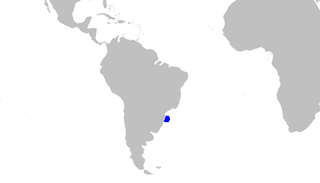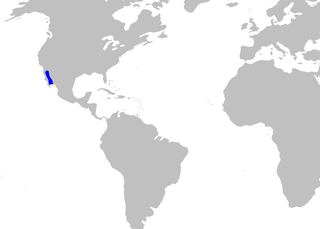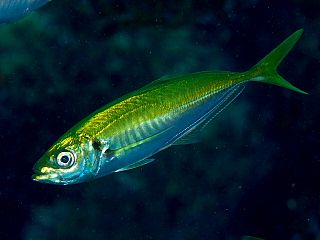
The Tetraodontiformes are an order of highly derived ray-finned fish, also called the Plectognathi. Sometimes these are classified as a suborder of the order Perciformes. The Tetraodontiformes are represented by 10 extant families and at least 349 species overall; most are marine and dwell in and around tropical coral reefs, but a few species are found in freshwater streams and estuaries. They have no close relatives, and descend from a line of coral-dwelling species that emerged around 80 million years ago.

The ocean sunfish or common mola is one of the largest bony fish in the world. It was misidentified as the heaviest bony fish, which was actually a different species, Mola alexandrini. Adults typically weigh between 247 and 1,000 kg. The species is native to tropical and temperate waters around the world. It resembles a fish head without a tail, and its main body is flattened laterally. Sunfish can be as tall as they are long when their dorsal and ventral fins are extended.

The spiny dogfish, spurdog, mud shark, or piked dogfish is one of the best known species of the Squalidae (dogfish) family of sharks, which is part of the Squaliformes order.
{{Automatic taxobox | name = Oarfish | image = Cuvier-69-Gymnètre.jpg | image_caption = Giant oarfish | taxon = Regalecidae | subdivision_ranks = Genera | subdivision =

The China rockfish, the yellowstripe rockfish or yellowspotted rockfish, is a species of marine ray-finned fish belonging to the subfamily Sebastinae, the rockfishes, part of the family Scorpaenidae. It is native to the waters of the Pacific Ocean off western North America.

The gag grouper, also known as velvet rockfish, the gag, or charcoal belly, is a species of marine ray-finned fish, a grouper from the subfamily Epinephelinae which is part of the family Serranidae, which also includes the anthias and sea basses. It comes from warmer parts of the West Atlantic, including the Caribbean and Gulf of Mexico. It is a drab, mottled-gray fish lacking the distinguishing features of most other groupers. Its pattern of markings resemble the box-shaped spots of the black grouper. It lacks the streamer-points on the tail fin that scamp and yellowmouth grouper have and lacks yellow coloration around the mouth.

The pyjama shark or striped catshark is a species of catshark, and part of the family Scyliorhinidae, endemic to the coastal waters of South Africa. This abundant, bottom-dwelling species can be found from the intertidal zone to a depth of around 100 m (330 ft), particularly over rocky reefs and kelp beds. With a series of thick, parallel, dark stripes running along its stout body, the pyjama shark has an unmistakable appearance. It is additionally characterized by a short head and snout with a pair of slender barbels that do not reach the mouth, and two dorsal fins that are placed far back on the body. It can grow up to a length of 1.1 m (3.6 ft) long.

The longfin sawtail catshark is a rare, little-known species of catshark, part of the family Scyliorhinidae. Once thought to be a subspecies of the roughtail catshark along with the Antilles catshark, it inhabits deep water off the Caribbean coasts of Panama and Colombia. This slim-bodied species has a marbled dorsal color pattern and a prominent crest of enlarged dermal denticles along the dorsal edge of its caudal fin. It can be distinguished from similar species by its relatively longer anal fin and small adult length of under 35 cm (14 in). The longfin sawtail catshark is oviparous.

The gecko catshark is a species of catshark, part of the family Scyliorhinidae, native to the northwestern Pacific Ocean from southern Japan to Taiwan, and possibly also off Vietnam. It is a common, demersal species found at depths of 100–900 m (330–2,950 ft). Its body is slender, with a pattern of dark saddles and blotches. The dorsal and caudal fins are edged in white, and there is a prominent crest of enlarged dermal denticles along the dorsal edge of the caudal fin. The gecko catshark is a schooling, opportunistic predator of bony fishes, cephalopods, and crustaceans. It is oviparous, with females producing two vase-shaped egg capsules at a time. This species is captured as bycatch, but does not appear to be threatened by fishery activities at present and has been assessed as Least Concern by the International Union for Conservation of Nature (IUCN).

The southern sawtail catshark is a species of catshark, part of the family Scyliorhinidae, endemic to southern Brazil. It inhabits deepwater reefs on the upper continental slope at a depth of 236–600 m (774–1,969 ft). Reaching at least 43 cm (17 in) in length, this slim-bodied species closely resembles the Antilles catshark. It has a prominent crest of enlarged dermal denticles along the dorsal edge of the caudal fin, as well as a distinctive color pattern of dark oval blotches, outlined in white, along its back. The southern sawtail catshark is oviparous, with females producing reddish egg capsules. The International Union for Conservation of Nature (IUCN) has assessed it as Vulnerable; it is often taken as bycatch and may be threatened by intensifying squid fishing.

The broadfin sawtail catshark is a common species of catshark, part of the family Scyliorhinidae. It is found on or near the bottom at depths of 150–540 m (490–1,770 ft), from southeastern Japan to the East China Sea. A slender species growing to 68 cm (27 in) long, this shark is characterized by a fairly long, pointed snout, a series of indistinct, dark saddles along its back and tail, and a prominent crest of enlarged dermal denticles along the dorsal edge of its caudal fin. In addition, adult males have very long claspers that reach past the anal fin. The broadfin sawtail catshark is an opportunistic predator of bony fishes, cephalopods, and crustaceans, with immature and mature sharks being primarily piscivorous. It is oviparous and reproduces year-round.

The peppered catshark is a common but little-known species of catshark, part of the family Scyliorhinidae, inhabiting depths of 130–1,326 m (427–4,350 ft) in the northern Gulf of California. It is found on or near the ocean floor, and conducts seasonal migrations, spending winter in deeper water. Reaching a length of 37 cm (15 in), this species has a slender grayish body with a fine covering of black dots. On the dorsal edge of its caudal fin is a prominent crest of enlarged dermal denticles. It is oviparous, with the reproductive period probably lasting from May to September. The International Union for Conservation of Nature (IUCN) has listed the peppered catshark under Least Concern, as it faces no significant threats from human activity.

The African sawtail catshark is a species of catshark, part of the family Scyliorhinidae. Demersal in nature, it is found at depths of 160–720 m (520–2,360 ft) off the western African coast from Morocco to South Africa. This slender species has a rather long, pointed snout, a series of dark saddles along the back and tail, and a prominent crest of enlarged dermal denticles along the upper edge of the caudal fin. Its maximum known length is 46 cm (18 in).

The popeye catalufa, also known as the bigeye soldierfish, is a species of marine ray-finned fish in the family Priacanthidae, the bigeyes. This fish has an overall dusky orange to red colour with white markings. The dorsal fin appears feathery while rest of fins have black margins. It occurs in the eastern Pacific, where it is found from Oregon to Chile. It occasionally makes its way into the aquarium trade. It grows to a size of 34 centimetres (13 in) in length. This species is nocturnal and shy, preferring deeper waters off islands. It has been recorded associating with squirrelfishes and cardinalfishes but the popeye catalufa goes as deep as 76 metres (249 ft), deeper than its associated species. This species has been recorded from rocky habitats at depths of less than 5 metres (16 ft) to over 100 metres (330 ft). It is a carnivorous species and, when kept in captivity, is known to feed on worms, crustaceans and brittle stars.

The razorback scabbardfish, Assurger anzac, is a rare species of cutlassfish, family Trichiuridae, and the only member of its genus. It has been caught from scattered locations worldwide: in the Atlantic Ocean it is known from off Puerto Rico, Uruguay, and the Walvis Ridge, in the Indian Ocean it is known from off western Australia, and in the Pacific Ocean it is known from off New Guinea, southern Japan, Midway Island, California, and the Nazca and Sala y Gomez Ridges. Adults are thought to be benthopelagic, occurring at a depth of 150–400 meters (490–1,310 ft), while juveniles are found near the surface or in midwater.

Sebastes miniatus, the vermilion rockfish, vermilion seaperch, red snapper, red rock cod, and rasher, is a species of marine ray-finned fish belonging to the subfamily Sebastinae, the rockfishes, part of the family Scorpaenidae. It is native to the waters of the Pacific Ocean off western North America from Baja California to Alaska.

Starksia atlantica, the smooth-eye blenny, is a species of labrisomid blenny native to the western central Atlantic Ocean and the Caribbean Sea where it inhabits coral reefs at depths of around 8 metres (26 ft).

The Japanese jack mackerel, also known as the Japanese horse mackerel or Japanese scad, is a species named after its resemblance to mackerel but which is in the family Carangidae, the jacks, pompanos, trevallies and scads. Their maximum reported length is 50 cm (20 in) with a common length of 35 cm (14 in). They have a maximum reported weight of 0.66 kg (1.5 lb) and a maximum reported age of 12 years. They are found around the coast of Japan, apart from Okinawa Island, usually on sandy bottoms of 50–275 m (164–902 ft) deep. They feed mainly on small crustaceans such as copepods, and shrimps and small fish. They are similar to the yellowtail horse mackerel around New Zealand and Australia, apart from having more gill rakers and larger eyes.

Dacodraco is a monotypic genus of marine ray-finned fish belonging to the family Channichthyidae, the crocodile icefishes, its only member is Dacodraco hunteri. This species is found in the Southern Ocean.

Sebastes elongatus, the greenstriped rockfish, striped rockfish, strawberry rockfish, poinsettas, reina or serena, is a species of marine ray-finned fish belonging to the subfamily Sebastinae, the rockfishes, part of the family Scorpaenidae. It is found in the northeastern Pacific Ocean.



















